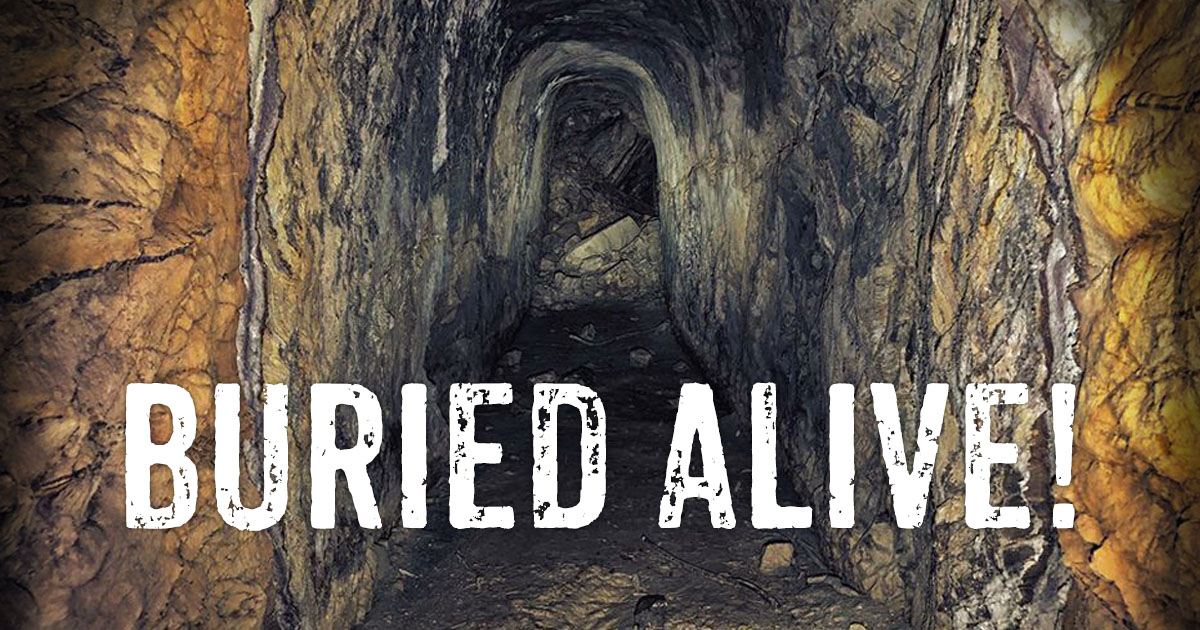
Life in Victoria was turned upside down during the 1850s as thousands upon thousands of men arrived to seek their fortunes at Australia's newly discovered goldfields.
The gold rush was a time of hope, a time when any hard working man could strike it rich through the efforts of his endeavours, regardless of his previous position in life.
Huge nuggets were being pried from the earth, pans and cradles were full of gold, and new rich fields were being discovered all the time.
But it wasn't all gold and glory. For every miner who struck it rich there were plenty of others who laboured tirelessly only to find nothing at the bottom of their shafts.
Worse still - drownings, cave-ins and freak accidents were a regular occurrence in the mines.
Alcohol and inexperience contributed to many mining deaths, and plenty of others occurred due to unforeseeable circumstances.
This was a period in Australia's history when the words 'tragic accident' and 'buried alive' were printed far too commonly in the newspapers.
Our cemeteries are filled with the graves of unfortunate men who met their end underground at the diggings.
Gold mining was risky business.
The following collection of incidents were printed in newspapers during the 1850s, and tell of tragic accidents where miners were literally buried alive.
Some miraculously escaped with their lives, others were killed on the spot, and some clung to life for hours before succumbing to their injuries.
In some cases trapped miners were alive when rescue efforts commenced but tragically perished before rescuers could reach them.
A riveting first-hand recollection of a Ballaarat (now Ballarat) miner describes many local mining accidents - including several miraculous escapes.
We will begin with a few stories of survival against the odds before turning to tragic deaths, an apparent attempt to cover up a murder using the all-too-common mining accident as a ruse, and finally the fascinating recollections of the Ballaarat miner.
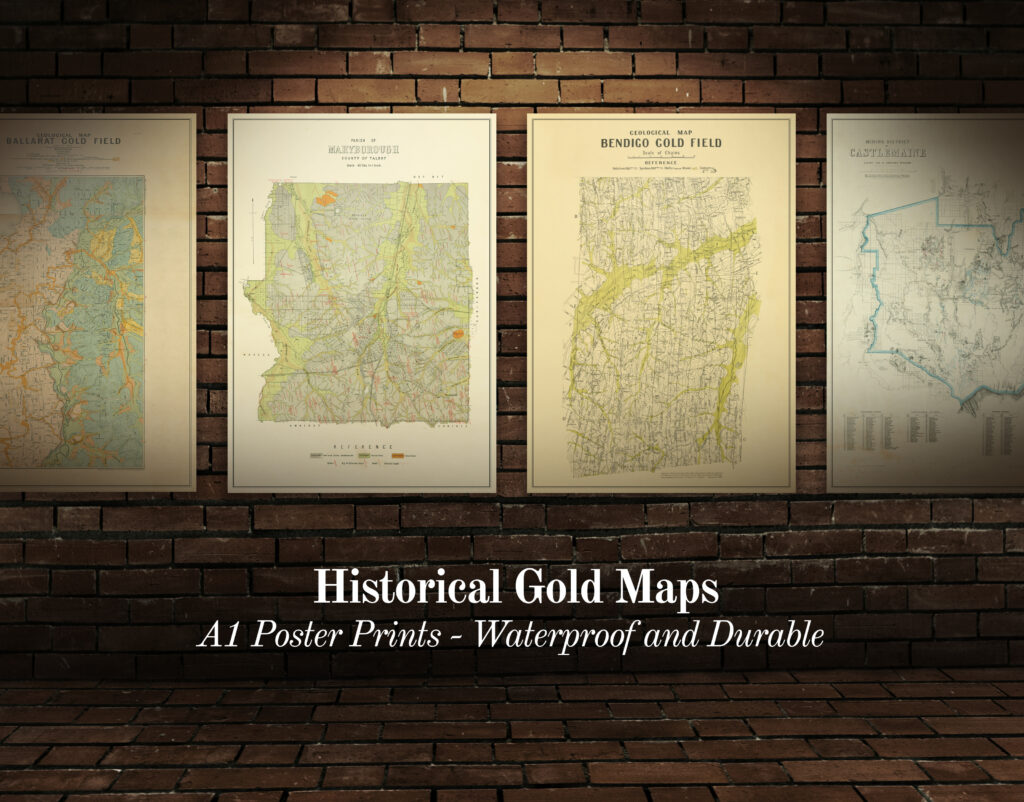
Shop our collection of historical goldfields maps, which show fascinating historical features in superb detail. High quality, durable A1 poster prints in a satin finish. Order yours today!
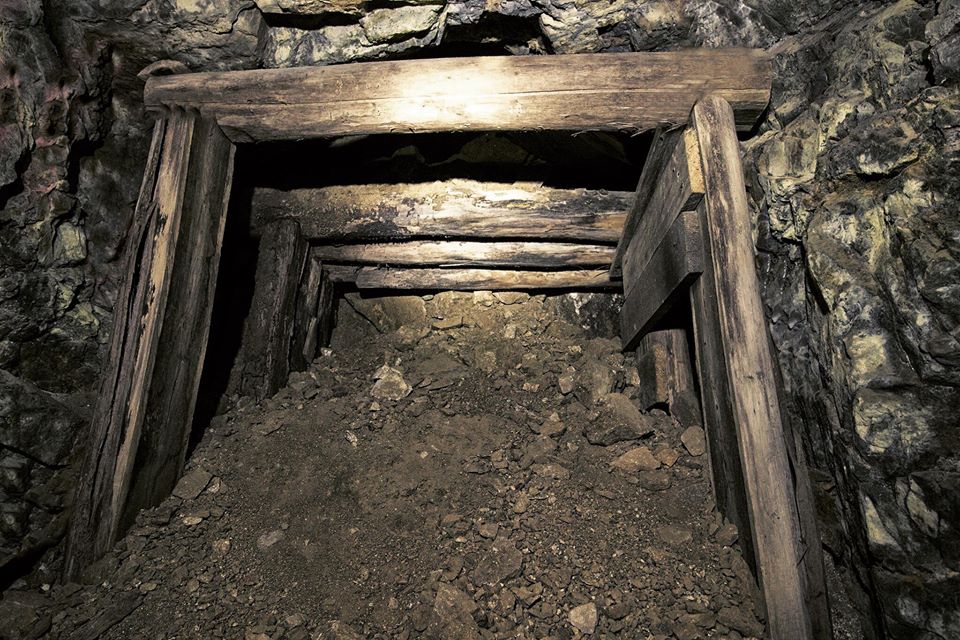
Underground mine cave-in, image kindly provided by The Victorian Historical Mine Shaft Chasers Inc
Miner survives being buried alive under several tons of earth, Kangaroo Gully, 1857
This incident had a very fortunate outcome, where a digger was trapped beneath several tons of earth and managed to survive because his head was encased in a cavity, providing sufficient air while he waited for rescue.
This incident shows the dangers of working even in relatively shallow mine shafts.
Melancholy Catastrophe - Early yesterday morning an accident occurred at the new rush at the top of Kangaroo Gully, which almost terminated fatally.
While a digger was working in a hole about ten or twelve feet deep, the sides gave way and literally buried him alive, but providentially, while his body was covered with several tons of earth, his head was encased in a cavity, with sufficient air to keep him alive till he was exhumed. - The Age (Melbourne), 7th September 1857
Young miner survives being partially buried under about half a ton, New Chum Gully, 1859
21 year old Ellis Davis suffered severe injuries and partial paralysis after being buried beneath half a ton of rock.
Davis was working in Martin & Co.'s claim in New Chum Gully when the incident occurred.
He was removed to the hospital where hopes of his recovery were entertained, though he may have succumbed to his injuries at a later date.
Shocking mining accident - Yesterday morning a young man named Ellis Davis met with a very sever accident while working in Martin and Co's claim, in New Chum Gully.
It appears he was working in a drive, and a quantity of rock shaled off from the roof and partially buried him under about half a ton of stuff.
He was got out as quickly as possible by his mates, and Dr. Boyd was called in, who, finding him suffering from severe injuries and partial paralysis, recommended his removal to the Hospital, where he was conveyed at once on a littler.
The extent of his injuries has not yet been ascertained, but though no doubt seriously injured, hopes are entertained of his recovery.
He is a young man of 21, unmarried, and a native of Wales. - Bendigo Advertiser, 25th November 1859
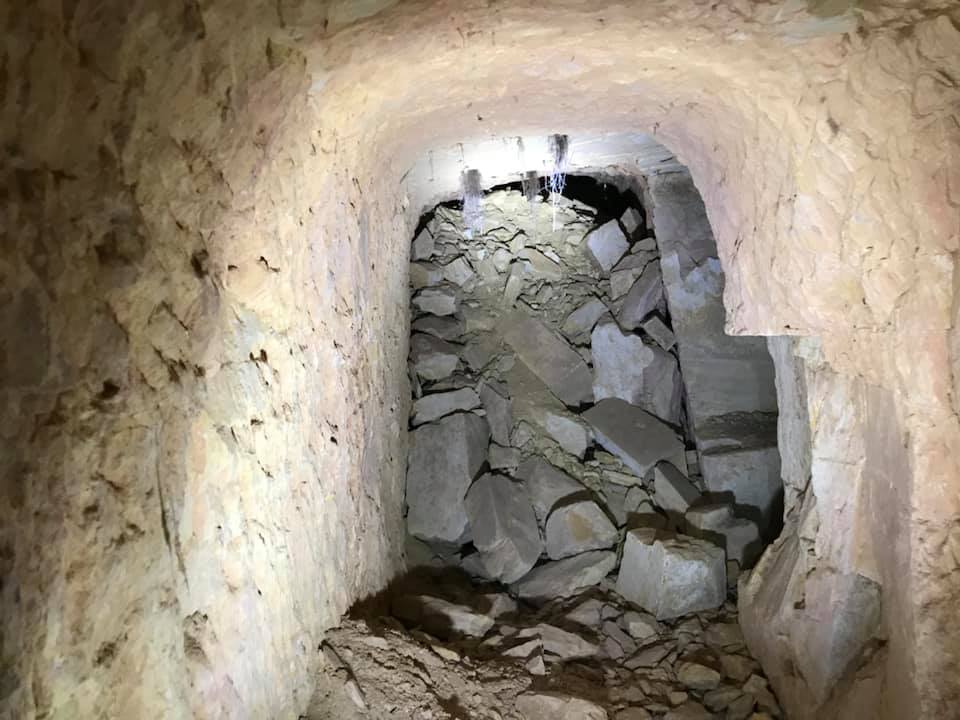
Underground mine cave-in, image kindly provided by The Victorian Historical Mine Shaft Chasers Inc
Two miners buried. Armstrong's, near Eaglehawk Gully, 1859
Two miners were buried in a drive, and a miner named Hall rushed to rescue them.
Working to dig out his companions, Hall himself was partially buried.
His companions were apparently killed almost instantly while Hall himself remained alive for around twelve hours before he was finally discovered.
His body was under so much pressure that he had completely lost feeling in his limbs.
When asked if the arm protruding from the rubble was his, Hall assumed it was the arm of one of his dead mates as he could not feel a thing when it was seized.
Although Hall was retrieved from the rubble within about an hour of his discovery, he succumbed to his injuries just a few hours later.
This incident was due to insufficient support in the area they were working.
Frightful accident at Armstrong's, three men killed. It is our painful duty to record a most shocking mining accident, which in all our experience on the gold-fields stands unequalled in its deplorable consequences.
By it three poor miners have been deprived of life, two of them leaving wives and families in a total state of destitution.
The three men, whose names were Hall, Robinson, and Wolland, were, on Monday last, working in the old ground at Armstrong's, near Eaglehalk Gully ;
Robinson was in the habit of spending his evenings with a neighbor of the name of Granland, and as on the night in question he did not make his appearance as customary Granland became uneasy, and ultimately at about twelve o'clock at night he went to the hole where he knew his friend was working, and descending discovered the frightful accident that had taken place ; the drive had caved in instantaneously killing two out of the three men.
The third (Hall) was partially buried, but in such a manner that although unable to move he was still alive.
Assistance was procured, and in about an hour's time the unfortunate man was released.
His extremities, particularly his arms, were so benumbed from pressure that he had lost all feeling in them When Granland went below he found the arm of the living man projecting from the dirt, and taking hold of it he asked if it belonged to the speaker. Hall replied that it did not, but that it was the hand of one of his mates who was dead, so completely had he lost all feeling in his members
The poor man was released from his awful position and taken to Granland's tent. He was perfectly conscious, and not in any great pain, but he gradually sunk, and expired between five and six o'clock the same morning, being only two or three hours from the time of his release.
Previous to his death it was ascertained from him that the accident had occurred at about two o'clock in the afternoon ; the ground had, without the least warning, caved in in large quantities, instantly buriying Robinson and Wolland.
Hall was working in another part of the drive, but hearing the ground give way, he rushed to the spot and commenced to rescue his mates, but, in a minute more earth coming down he was himself partially buried in the way he was found, sufficiently uncovered to breathe and speak, but utterly unable to move.
In this terrible position he remained for nearly twelve hours expecting death every moment.
It is hardly possible to imagine the sufferings of this poor man through those terrible hours of suspense, sufferings which terminated in his death so soon after his release.
It took three or four hours hard work before the bodies of the other two men were recovered from their position; and from the quantity of earth found upon them it was evident that their death must have been almost instantaneous.
The drive where the men were working, though of considerable extent, was supported by only three props, there is therefore little wonder that the accident occurred.
The depth of the hole was about thirty feet. - The Age (Melbourne), 2nd August 1859
Miner buried alive, calls out to his rescuers as they work to free him. Castlemaine, 1859
Rescuers worked quickly to reach a miner who had been buried alive beneath a heap of gravel in a mine behind Castlemaine's Imperial Hotel.
At first while they were digging they could hear the unfortunate man calling out to them, asking that they make haste. His voice grew fainter and fainter, and after an hour and a half of digging they finally reached his lifeless body.
Dreadful accident and loss of life - On Wednesday afternoon, a dreadful accident happened in the rear of Meriton's Imperial Hotel, which has resulted in the death of one man, and serious injury to another.
It appears the two men were employed in taking out the last rock pillar left in a claim.
A rumbling noise was heard by both overhead, the one who is only injured immediately drew back to the mouth of the drive, but the other hesitated a moment in moving, and when he decided, it was too late to escape.
A layer of gravel about two feet in thickness separated from the cement above and fell down on the poor fellow, literally burying him alive.
The one who has escaped from the jaws of death was very soon extricated, a very small quantity having spread over him.
Shortly after the occurrence, a number of men descended, and after working with praiseworthy energy for an hour and a half, the other and most unfortunate man was extricated, but life was found to be quite extinct.
During the first part of the time the men were occupied in removing the debris the buried man cried out, "For God's sake, make haste."
This he repeated several times, but in a voice growing fainter at each repetition.
It appears he was an employed man, having no interest in the claim, but was paid wages at the rate of £3 per week.
An inquest was held on the deceased, known as Cumberland Jack, and a verdict of Accidental Death returned. - Mount Alexander Mail, 27th June 1859
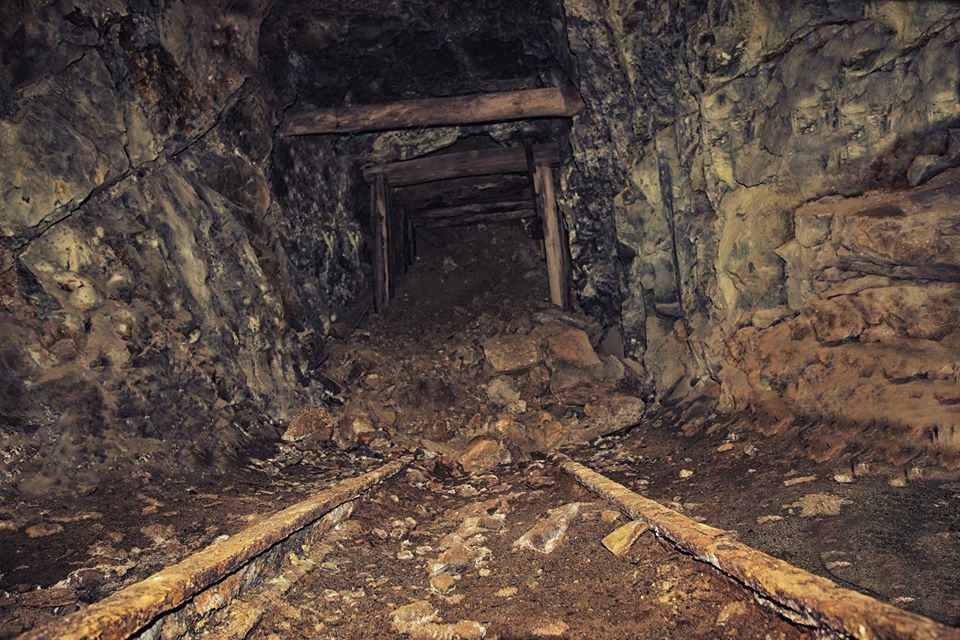
Underground mine cave-in, image kindly provided by The Victorian Historical Mine Shaft Chasers Inc
Miner buried up to his waist, his brother and other rescuers work fruitlessly to free him until another cave-in covers the man completely. Alma, 1858
The drive where this accident occurred was thought to be securely timbered, and shows that even the most careful miners were still at risk of disaster.
Dreadful accident - We have to record a sad catastrophe at the Alma, by which two miners have met with their deaths.
On Tuesday morning four men were engaged in a deep hole behind Henry's store, two were in one drive, and two in another.
The ground was very rotten, but the party supposed that it was securely timbered. Suddenly a fall of earth took place on one of the drives, completely smothering one man and covering the other up to the waist.
The two mates of the latter flew to his assistance ; they found as fast as they removed the earth and timber from around him, that fresh fell, as the fallen stuff supported in a manner the overlaying mass.
This continued for nearly half an hour - the unfortunate man constantly calling on his mates to free him.
At the end of that time an immense fall took place, and he was completely buried It took thirteen hours to get him out, large numbers of miners lending assistance.
Of course he was quite dead.
His name was Shea, a young man of 25 years of age ; his brother was in the other drive, and was one of those trying to remove the dirt after the first fall of the earth.
The man who was first buried has not yet been got out, it was found impossible to get to him from the shaft, and they have had to drive from the Sebastopol claim.
Upwards of thirty miners are engaged in the task.
From the first moment of the accident all the shafts were stopped, and the utmost sympathy shown.
A general gloom is thrown over the quiet community of the Alma. There does not appear to have been any carelessness in the matter, the drive was thought to be securely timbered, and the unexpected and disastrous nature of the accident naturally brings home to the miners that their calling is not altogether with out danger, supposing even that they use the proper caution.
An inquest was held on Wednesday morning last. Verdict : Accidentally smothered from a large fall of earth. - Mount Alexander Mail, 23rd April 1858
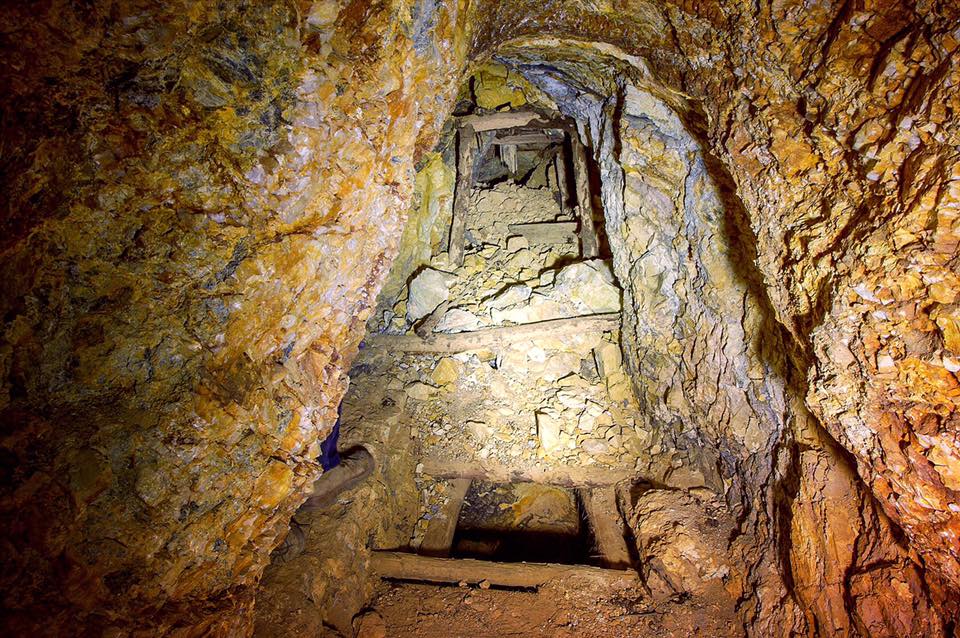
Underground mine cave-in, image kindly provided by The Victorian Historical Mine Shaft Chasers Inc
Careless miner buried alive while attempting to remove a single pillar without providing any additional support. Rescued alive, but succumbed to his injuries soon after. Kangaroo Flat, 1859
Despite his swift rescue and the optimistic view that he would recover, this careless miner unfortunately succumbed to his injuries the morning after the accident.
FATAL MINING ACCIDENT - one of those catastrophes that too often arise from the careless or venturesome manner in which miners conduct their operations, occurred at Kangaroo Flat on Tuesday last, 18th instant, whereby James Brown (generally known as Kentuck) -lost his life.
Brown was endeavoring to remove a single pillar that supported a large mass of earth; this he was doing cautiously, but without propping or slabbing when suddenly the superincumbent mass fell, crushing and burying him beneath.
He was immediately dug out and conveyed to his tent, was perfectly sensible, and it was thought he would recover, but early the following morning he died.
An inquiry was held on Friday before Charles Shuter, Esq, J.P, and a post mortem examination made by Dr Kieser of Ballan, from whose evidence it was ascertained that death was caused by rupture of the bladder, occasioned by the earth falling on him.
Deceased hailed from Kentucky, and it is believed he has no relatives or friends in this country. He was decently interred on Friday after the enquiry. - The Star (Ballarat) 29th January 1859
Suspicious death of a Wedderburn miner, Jury strongly of the opinion that this was a murder made to look like an accident
Witnesses who attended this supposed mining accident noted the suspicious circumstances surrounding the man's death, and when brought to court the Jury was strongly of the opinion that this was indeed foul play.
The article is rather lengthy, but the following extracts provide a good account. The article can be read in full here.
On the 25th March last, a miner named George Tickner, living at Wedderburn, met his death in a drive, under most suspicious circumstances.
He was found suffocated with only a few inches of dirt over his body, which two or three of the witnesses swore, if he had been sensible he could have freed himself from.
On his head there was a mark of a blow from a pick, which the medical witnesses considered sufficient to have caused temporary insensibility.
There were marks of a pick in the drive above where the deceased lay, is if the earth had been picked down on him. There were other circumstances of suspicion which the evidence will make clear ...
... The jury returned the following verdict: "That the deceased, George James Tickner, met with his death from suffocation, caused by earth falling on him, but they are strongly of opinion that the earth was picked down upon him after insensibility had been produced by a blow on the temple". - The Age (Melbourne), 20th April 1859
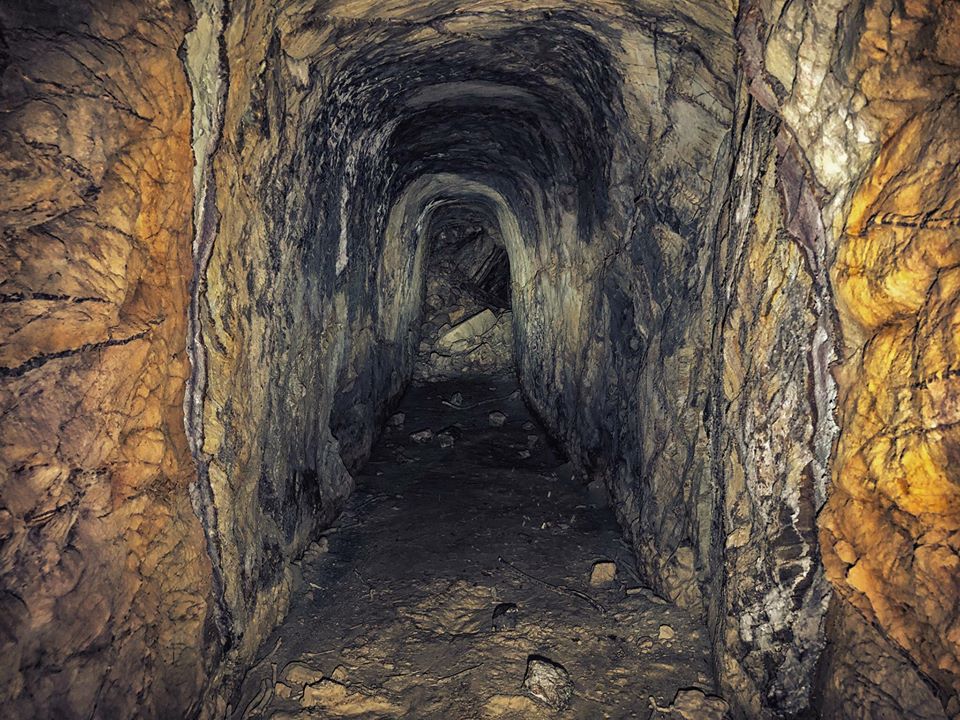
Underground mine cave-in, image kindly provided by The Victorian Historical Mine Shaft Chasers Inc
Recollections of mining accidents by a Ballaarat Miner, 1858
This final article demonstrates just how common these accidents were on the goldfields, with a single miner able to recall many incidents from his time so far at the diggings.
This recollection is fascinating, and is well worth reading in full.
Many have been the deaths from mining accidents; but some instances of escape are among the most miraculous things I ever head of. I remember, about three or four years long, a man who had been working alongside of me on Golden Point, was working a hole on Bakery Hill, I think - uncommonly deep it was for those days, I believe it was the deepest hole on Ballaarat at the time.
Well, he was on the watch. He had been below the first shift, and I 'had come up for supper, but being very tired, he took a seat on the bucket, which was standing near the mouth of the shaft, and somehow dosed off to sleep.
Presently one of the men called out, "Bill, ain't you for any supper?" "All right," says he, "I'll come directly;" but poor fellow, he was too sleepy,and went nodding again, with his head right over the shaft; he got drowsier and drowsier and nodded head foremost down.
The men heard him go and rushed to the windlass, and you may fancy their astonishment, a second or two after, to hear him sing out - in rather a faint voice, certainly - Heave up." Yes, Bill had tumbled down a hole about 170 feet, and was comparatively unhurt; certainly, his head and back were bruised, for, in going down, he had performed a succession of summersaults, striking his head and back all the way down.
I don't think Bill ever went to sleep on the stage again. I've felt rather shy of a seat on the bucket my self since.
But that was nothing to the man on the White Horse, in No. 6, I think it was ; they had just bottomed, and were putting up a whim ; the hole was about 260 feet deep.
This man, I forgot his name, was doing something to the poppet heads over the shaft, when all at once his foot slipped, and down he tumbled straight; he fell clear, and did not touch either side, he went plump to the bottom.
One of the well-boards was on, and the bucket was standing on it, which he just struck with his chest, and fell in the well, where there was a foot or two of the water.
Of course we thought he must be stone dead ; but he was not. They got him up, and Dr Kenworthy was soon on the spot ; the only serious injury the man had sustained was a fracture of the chest-bone. In a short time he was quite recovered.
Another wonderful escape took place on the Frenchman's Lead, just on the brow of Sebastopol Hill. A man was drawing slab, in a hole near the Malakoff; he was taking them out upwards, and had got to within 100 feet of the top.
Most of the ground was dry rock, and the space behind the slabs was filled up with loose stone and rubbish. He was standing on a stage, which was hanging by two ropes.
Well, the man was incautious enough to tear off the battens from the slabs for some distance up - I think all the way ; the consequence was, that as soon as he got out of the clay into the rock, there was nothing to hold the slabs up, and 30 or 40 feet came rattling down on him like a shot ; slabs, dirt, and stones, some of them two or three hundred weight, filled up the shaft tor several feet, and of course nothing could be seen or heard of the poor chap below.
This occurred about noon, just, after he had come back from dinner. Of course, a crowd was soon on the spot, and to work they set, getting out the stuff so as to get at the poor fellow's body : after a few hours' work, however, they found out that he was still alive, and to the utter astonishment of everybody, about 11 o'clock he was got up very little hurt after being for upwards of 10 hours buried under several tons of rock and dirt.
The fact was, that the slabs had formed a sort of arch over him, and kept off the greater part of the weight.
It was awfully dangerous work getting the stuff out, for there was a very large quantity hanging in a most dangerous position, and they had to swing a man half way down the shaft to guide the bucket, for a single touch would have brought down another 20 feet on to the two men below.
It has always struck me as strange that so few accidents of a fatal nature have occurred in blasting, especially when the total inexperience of almost all the men in any work of the nature is taken into consideration, I think there was only one man killed in this way on Ballaarat, and that was on the Gravel Pits : there were a good many accidents on Frenchman's and White-horse, but none of them were fatal in their results.
The most serious occurred in the Redan claim, No. 50, Frenchman's : two men were charging a hole, they had got it half taped up, when off it went.
The man who was holding the tamping iron - Andrew Dougles was his name - got the most hurt ; he was entirely blinded, one eye quite destroyed, and the sight of the other gone, though the eye itself was left; his arm and hand were frightfully scorched and mutilated, and two or three fingers were broken.
He was a long while in a very precarious state, but eventually he recovered his health ; but I believe, he has never got back his sight. The other man was not so badly injured.
I myself was once down a hole when a shot went off; we were boring out one that had missed fire we had got out the tamping fortunately, and where just bursting the cartridge when it exploded, I never shall forget the blaze of intense light that burst upon my eyes as I rolled back, stunned for the instant, from the thick darkness that followed.
My first impression was that I was blinded, however, on getting to the surface I found I was unhurt, and so was my mate ; we were so black as chimney-sweeps, our eyes smarting dreadfully; but after a wash we went down, recharged the shot, and fired it off.
Some few deaths have occurred from ropes breaking, but not so many as might be supposed. The most extraordinary was the case at the Gravel Pit, where a new rope broke the first time of its bung used ; the poor fellow was killed on the spot.
It is supposed that the rope had got burnt with vitriol, at least that was the only way the circumstance could be accounted for. It caused a good deal of alarm at the time, and for a long while afterwards men always tested new ropes before a man who trusted on them.
Another rope-breaking occurred on the Terrible Lead. It was rather singular ; buckets of dirt and men had gone up on it all day long and just at 'the close of the day's work it broke with an empty bucket, which fell right on the man's head ; he was dead before they got him out of the hole.
The men would not work the claim after, and the lead got deserted a time, and was not retaken up for two or three years. It was a terrible duffer anyhow, every ounce of gold got from it cost £20, I'll swear! - Recollections of mining accidents, Ovens and Murray Advertiser, 29th March 1858
The Victorian Historical Mine Shaft Chasers Inc
All the underground images on this page were taken by The Victorian Historical Mine Shaft Chasers Inc, a team of professionals who abseil down into Victoria's historical mines to survey our long-forgotten underground.
Their explorations and discoveries are documented and published on YouTube and social media, providing us with a unique glimpse into Victoria's rich mining history.
The photos, videos and information they share of their adventures through Victoria's abandoned underground mines are absolutely fascinating.
If you haven't already, I highly recommend that you subscribe to their YouTube channel and follow them on Facebook/Instagram.
SEE ALSO
- Interview with Raymo Shaw, The Victorian Historical Mine Shaft Chasers Inc
- Abandoned mines of the Victorian Goldfields
- The dark side of the Goldfields
- New Australasian No. 2 Gold Mine, site of one of Australia's worst underground mining disasters
- Resources for gold prospecting in the Victorian Goldfields
